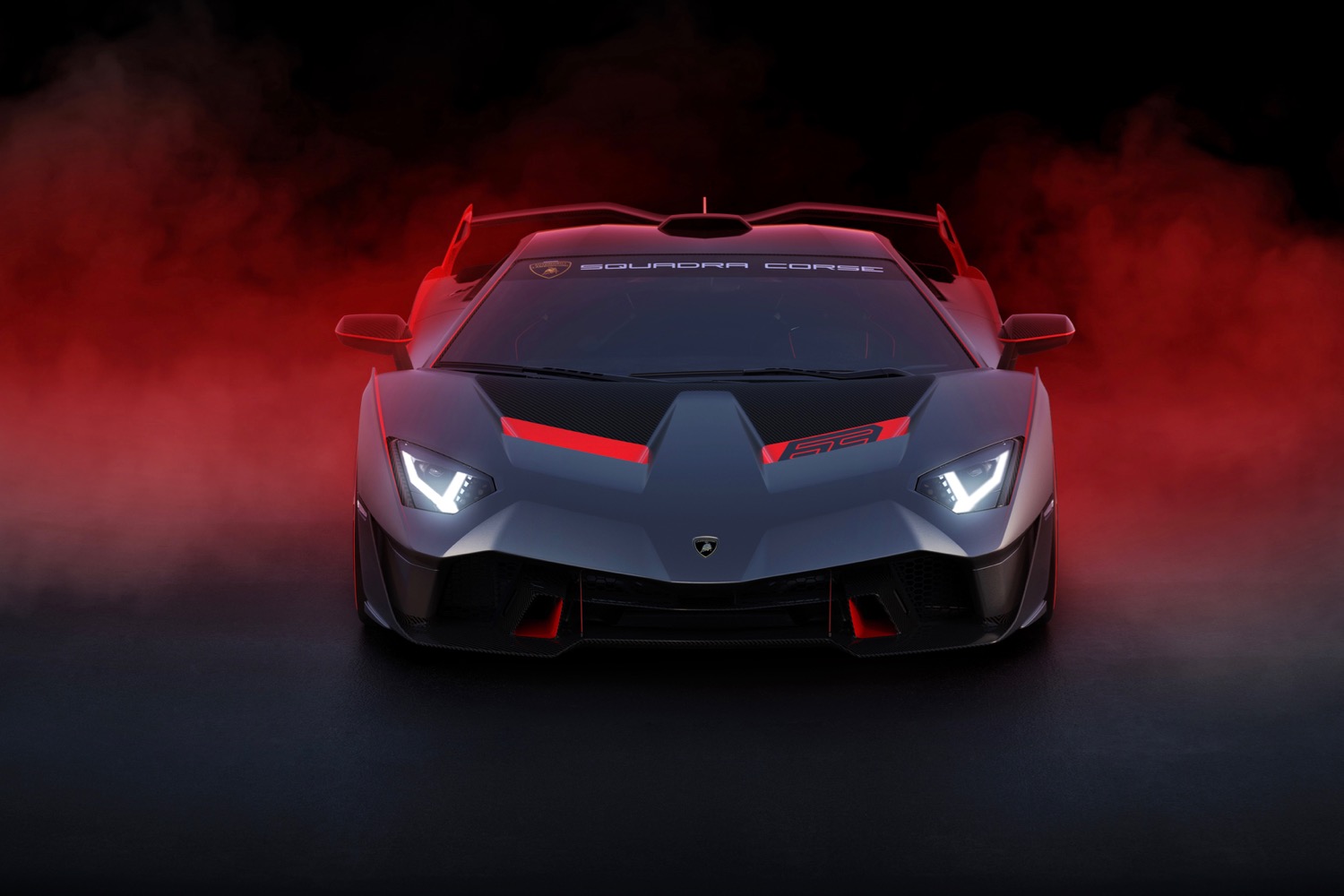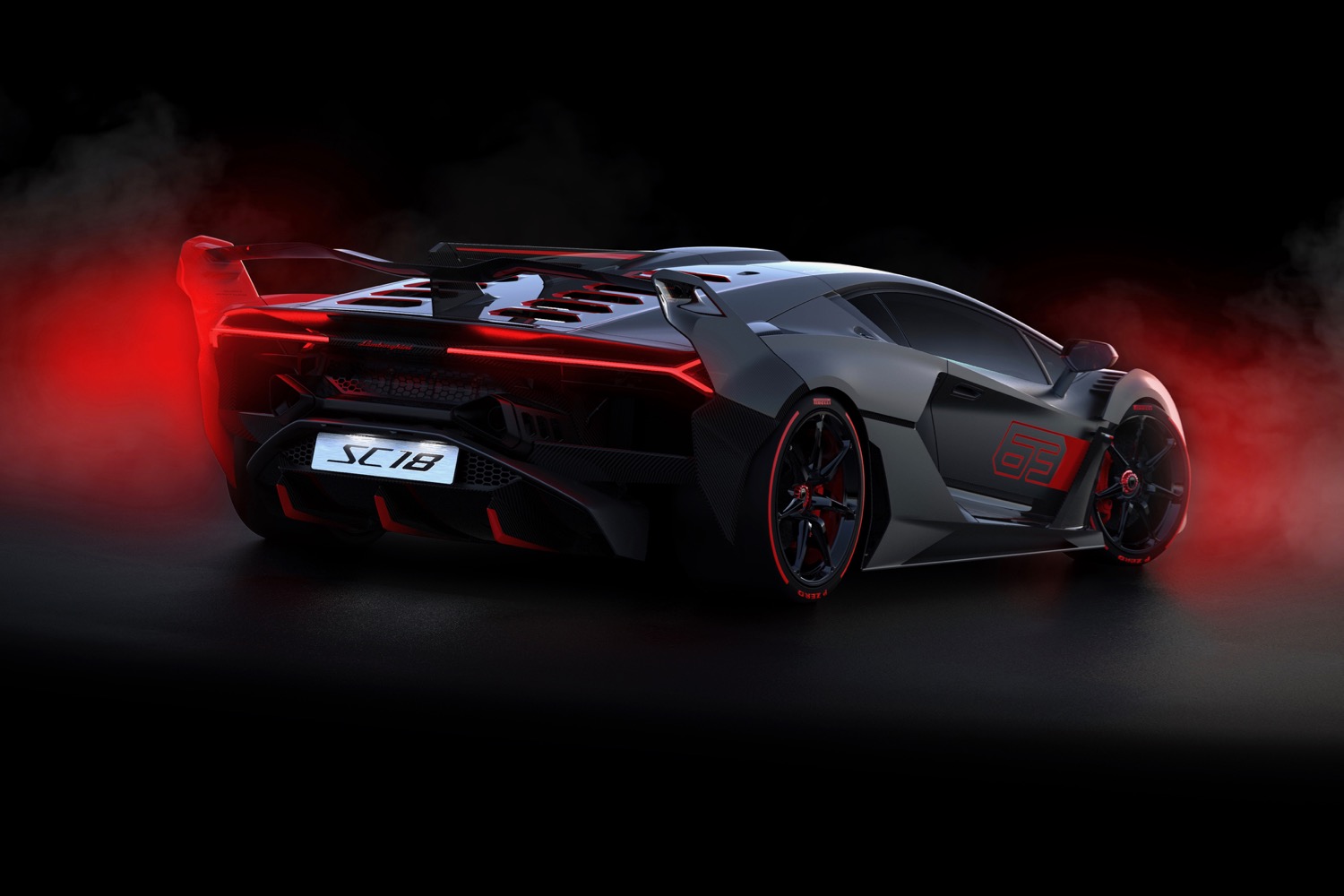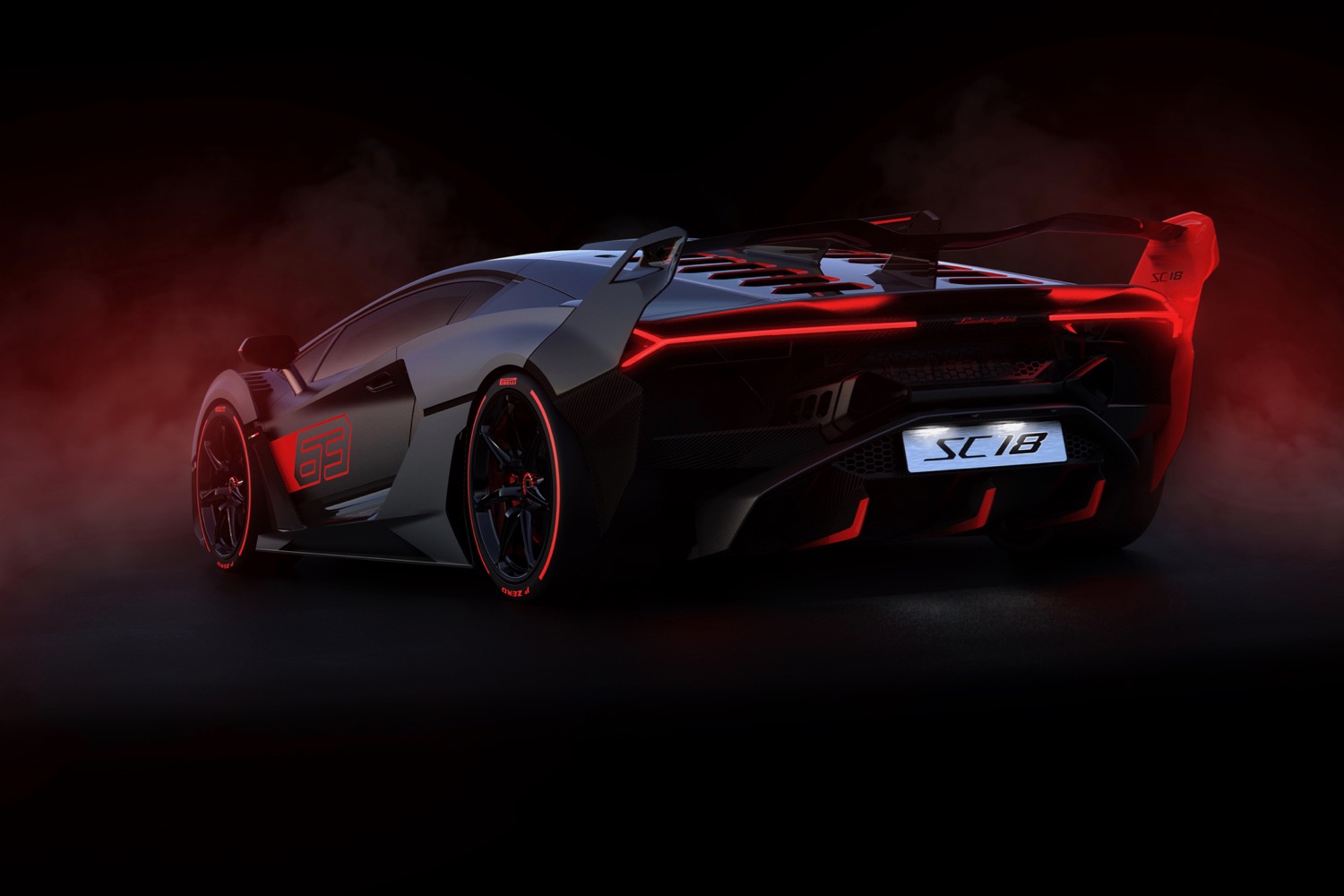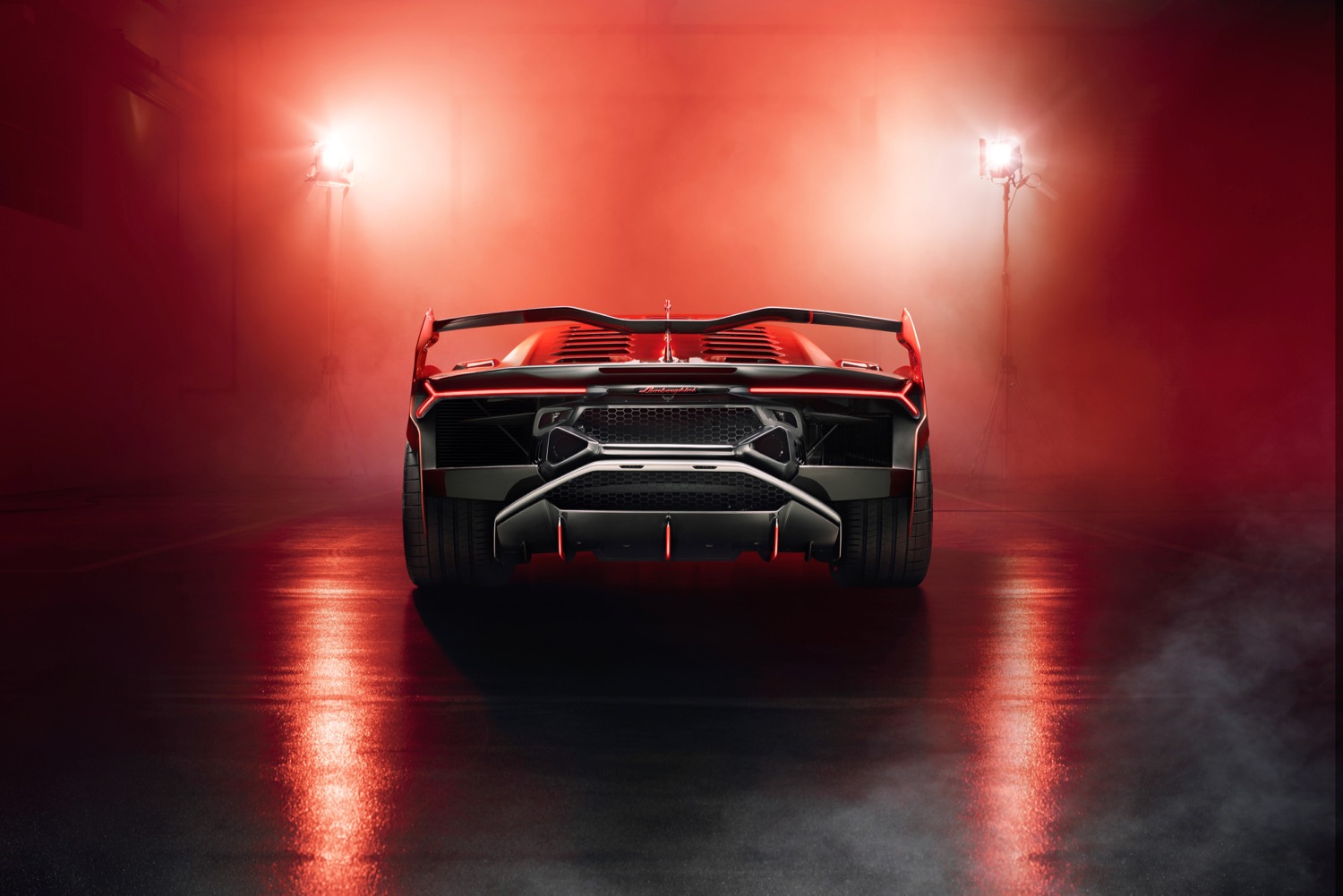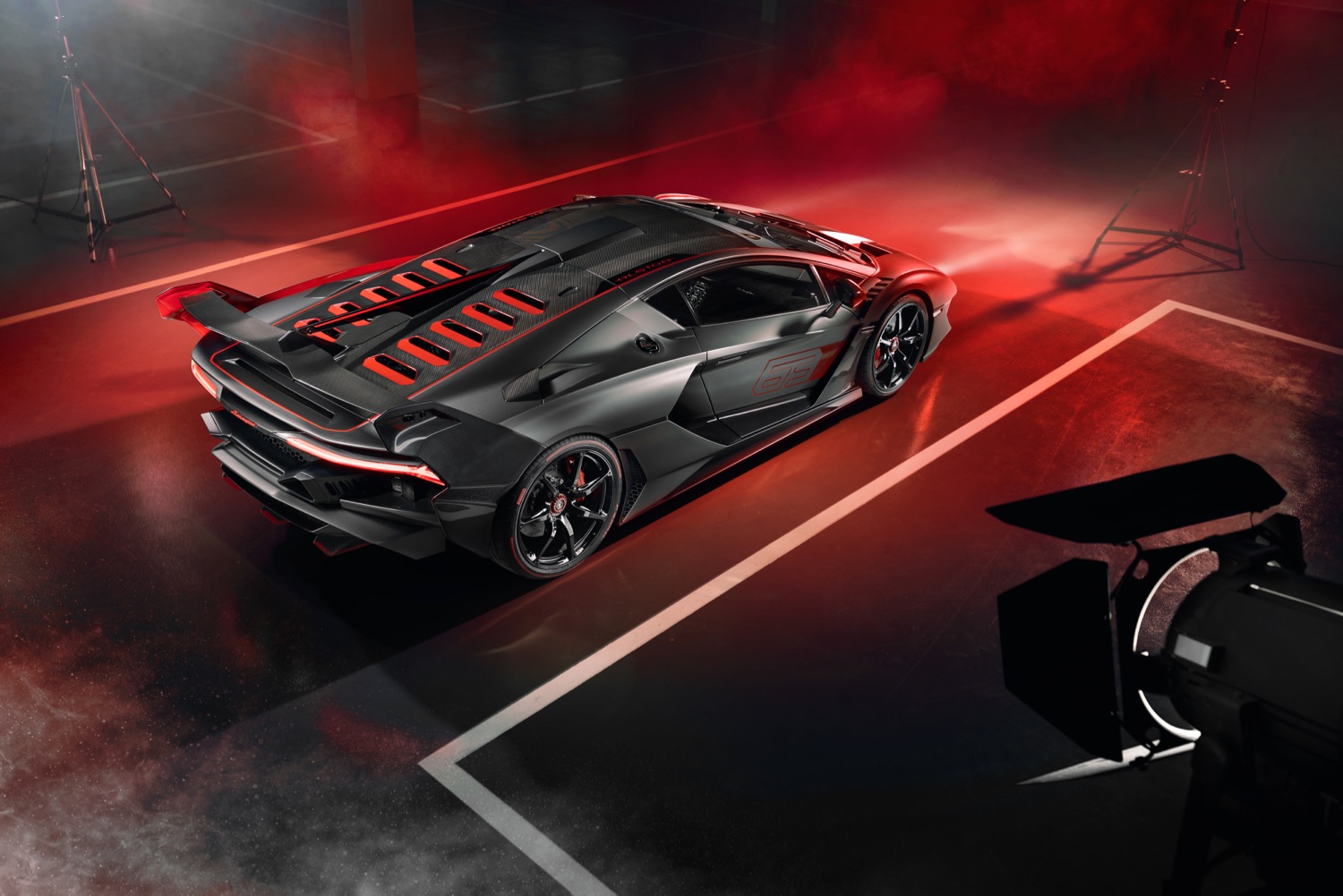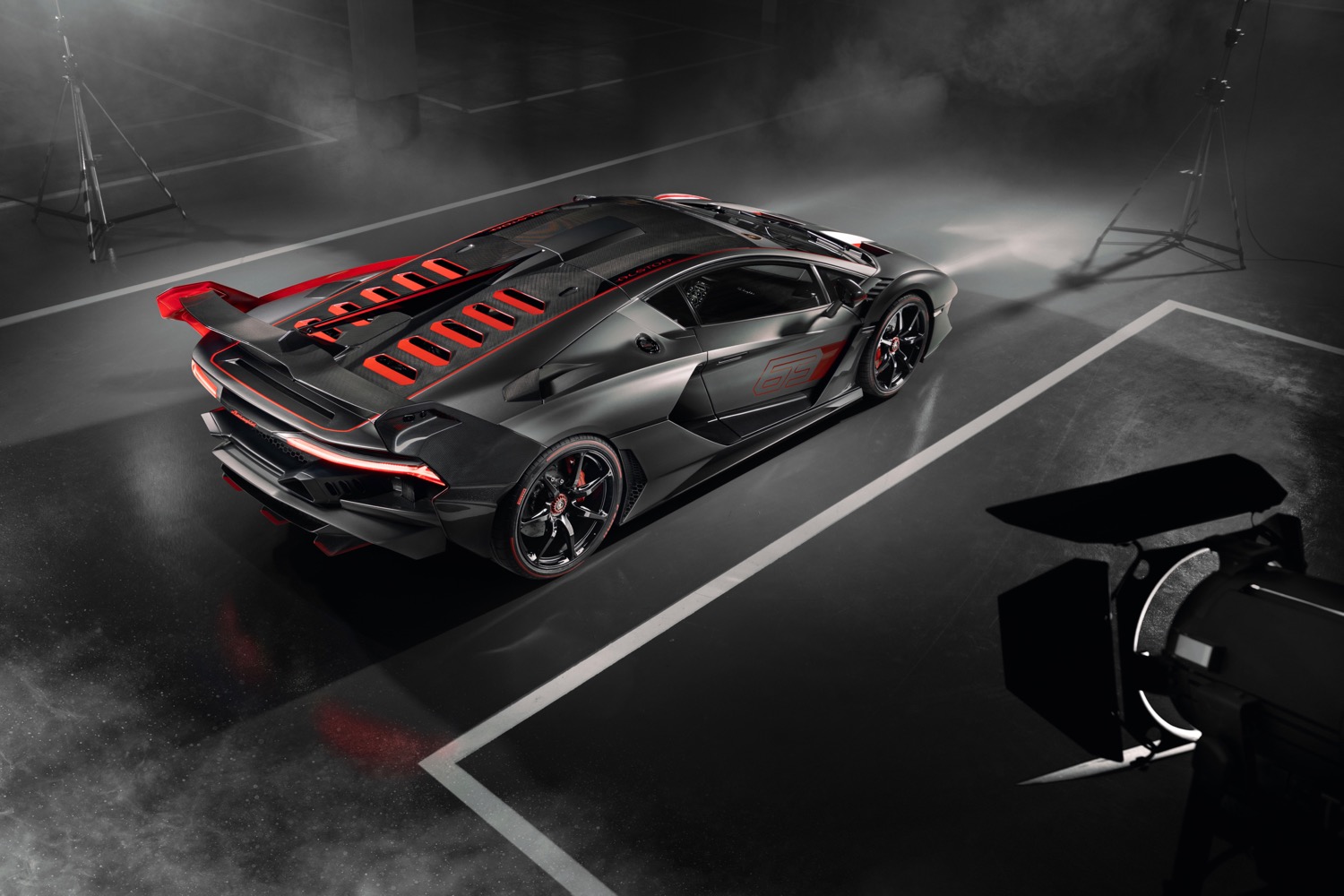A stock Lamborghini isn’t exactly lacking in excitement, but the Italian automaker still feels the need to build even crazier limited-edition supercars once in awhile. The latest, the Lamborghini SC18, is a one-off designed by Lambo’s Squadra Corse motor-sports department, and features aerodynamic upgrades from the automaker’s race cars.
The SC18 is based on the Lamborghini Aventador, and is designed for track use. Driving that point home are the mess of air scoops and vents, which Lamborghini claims are derived from its Huracán GT3 Evo and Huracán Super Trofeo Evo racers. A massive carbon fiber rear wing features three mechanical adjustments, allowing the aerodynamic setup to be tweaked for different circuits, according to Lamborghini. More holes were punched in the rear of the bodywork to feed additional cooling air to the engine.
That engine is the same 6.5-liter V12 used in the Lamborghini Aventador SVJ — the hottest road-going version of the Aventador. In the SC18, the V12 produces the same 759 horsepower and 531 pound-feet of torque as the SVJ. Power is sent to all four wheels through a seven-speed automatic transmission. The SC18 features an onboard telemetry system that records performance data from track sessions. Modern race teams rely heavily on this kind of data to help improve both car and driver.
Lamborghini also claims to have reduced weight through increased use of lightweight materials, but did not quote any specific figures. The SC18 also sits lower to the ground than a stock Aventador, at just 109 millimeters above the pavement. The car sits on staggered wheels measuring 20 inches in diameter at the front and 21 inches at the back. Those wheels are shod in Pirelli P Zero Corsa tires specially developed for the SC18.
The SC18 was built at the request of a Lamborghini customer. It’s unclear if Lambo will build more copies, but the automaker did say that the SC18 paves the way for future customized one-offs designed in concert with its Squadra Corse motor-sports division. Lamborghini doesn’t have as deep a racing background as rival Ferrari, but the automaker is trying to make up for lost time. In addition to the SC18, Squadra Corse just finished transforming Lamborghini’s Urus SUV into a race-ready concept car called the ST-X.


